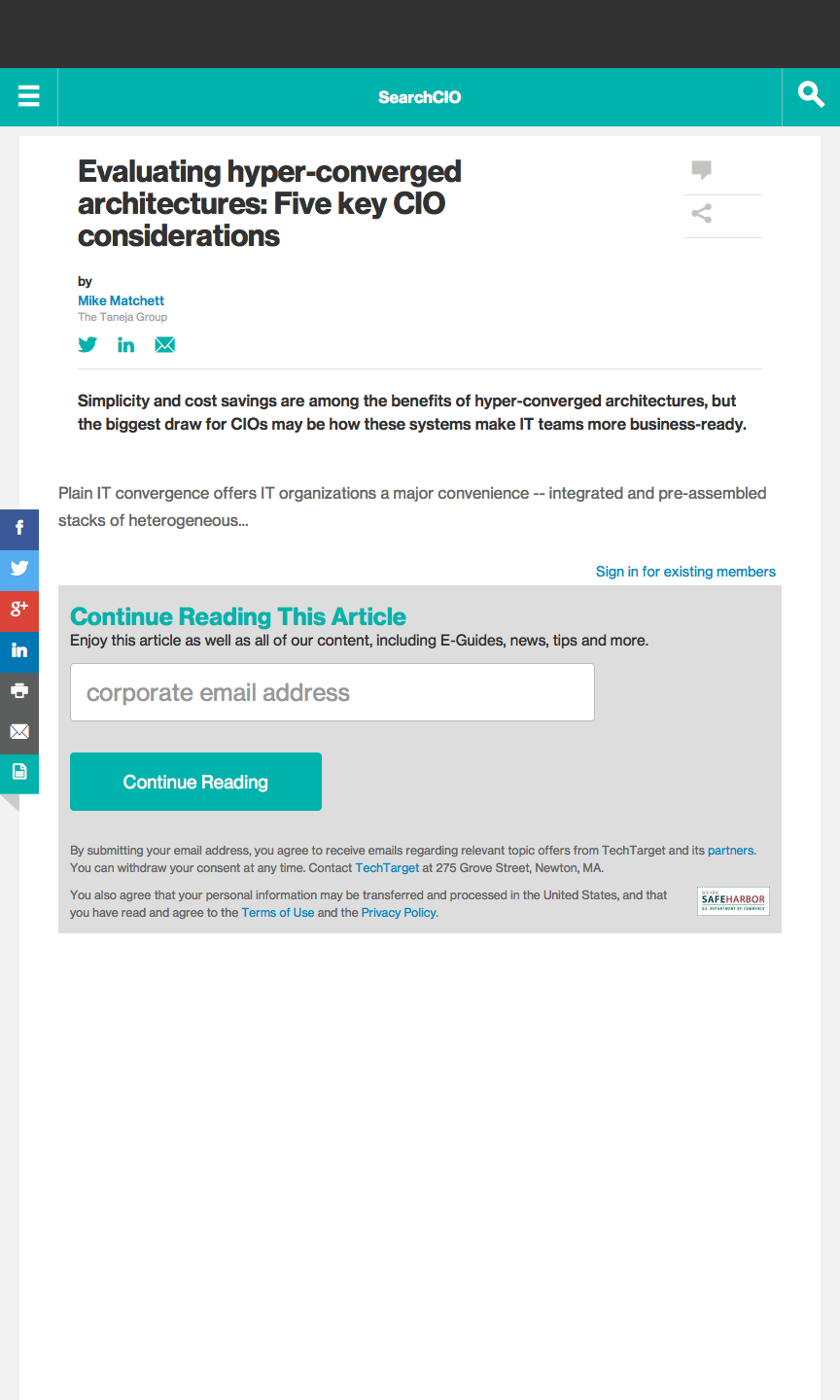Evaluating hyper-converged architectures: Five key CIO considerations

An IT industry analyst article published by SearchCio.
 Plain IT convergence offers IT organizations a major convenience — integrated and pre-assembled stacks of heterogeneous vendor infrastructure, including servers, storage and networking gear, that help accelerate new deployments and quickly support fast-growing applications.
Plain IT convergence offers IT organizations a major convenience — integrated and pre-assembled stacks of heterogeneous vendor infrastructure, including servers, storage and networking gear, that help accelerate new deployments and quickly support fast-growing applications.
But IT hyper-convergence goes farther to integrate IT infrastructure into simple modular appliances. Where pre-converged racks of infrastructure can provide good value to enterprises that would otherwise buy and assemble component vendor equipment themselves, hyper-converged architectures present a larger opportunity to not only simplify IT infrastructure and save on capital expenditures (CAPEX) but also help transform IT staff from internally focused legacy data center operators into increasingly agile, business-facing service providers.
With hyper-converged architectures, IT organizations can shift focus towards helping accelerate and enable business operations and applications, because they don’t spend as much time on, for example, silo troubleshooting, stack integration and testing, and traditional data protection tasks. The decision to adopt hyper-converged architectures is therefore something that business folks will see and appreciate directly through increased IT agility, cloud-like IT services, realistic BC/DR, and a greatly improved IT cost basis.
…(read the complete as-published article there)
